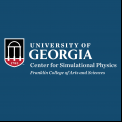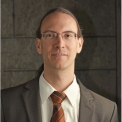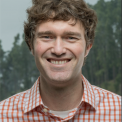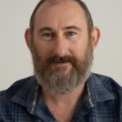Abstract: Simulating dust evolution is of most interest in astrophysics, since recent observations indicate that solids can strongly decouple from the surrounding interstellar gas. However, treating solid grains provides several challenges related to resolution in time and space or over-clumping. I will present strategies and algorithms designed to overcome these difficulties, and illustrate their efficiency on some real astrophysical objects.
Events Calendar View
-
CSP Lunch Seminar
Dec 1, 2020
Simulating Astrophysical Dust
-
Departmental Colloquium
Jan 21, 2021
Listening to the ultrafast chat of two excited electrons — and asking them some quick physics questions
The matter we see around us consists of atoms with attached electrons, pairwise “glueing” atoms together in molecules, and giving objects their color by resonantly interacting with light. This talk starts out with how the strong electric fields of intense pulsed lasers can probe and modify the electron pair within the helium atom. Our experiments reveal a time-domain picture of absorption with a link between a laser- controllable phase and the Fano resonance. The same general physics mechanism currently unlocks new science areas ranging from laser- driven large solution-phase molecular dynamics to precision spectroscopy with hard-x-ray light.
-
CSP Lunch Seminar
Jan 26, 2021
Conformational mechanics for polymers doubly-grafted to a homogeneous substrate
-
Departmental Colloquium
Jan 28, 2021
The exciting world of lanthanide-based nanoparticles: from photon avalanches to nanoscale lasers
Though their unique optical properties are proving advantageous for numerous applications, an ongoing challenge facing upconverting nanoparticles (UCNPs) remains achieving satisfactory upconverted signal and quantum yield while illuminating at low fluences. Here, I will describe the pros and cons of various strategies used to improve UCNP signals and efficiencies, which are pushing UCNP brightness to unprecedented levels. Of particular note here are advances in dye-sensitized UCNPs,1 high-lanthanide-content compositions,2,3 exploitation of stimulated emission,4,5 and, most recently, the realization of photon avalanching lanthanide-based nanoparticles.6 The impact of these concepts is now being widely felt in fields spanning deep-tissue imaging, optogenetics, remote sensing, anti-counterfeiting, and solar light harvesting
-
CSP Lunch Seminar
Feb 2, 2021
Simulating planet-forming accretion discs

Guest: Dr. Cassandra Hall, Center for Simulational Physics, University of Georgia
Tuesday, February 2, 2021 12:45 pm - 1:45 pm
Location: Zoom Meeting -
Departmental Colloquium
Feb 4, 2021
Electron - electron Correlations, Making & Breaking Chemical Bonds
I will describe our recent progress in the combined experimental and theoretical study of single-photon double-ionization process and the Coulomb explosion dynamics that it triggers in small molecules. In particular, I will describe the roaming H2 dynamics and formation of the H3+ cation and demonstrate how molecular dynamics measurements help identify the spin-correlation of the electron-pair, ejected in single-photon double-ionization of methanol.
Page 106 of 121, showing 6 records out of 723 total, starting on record 631, ending on 636




